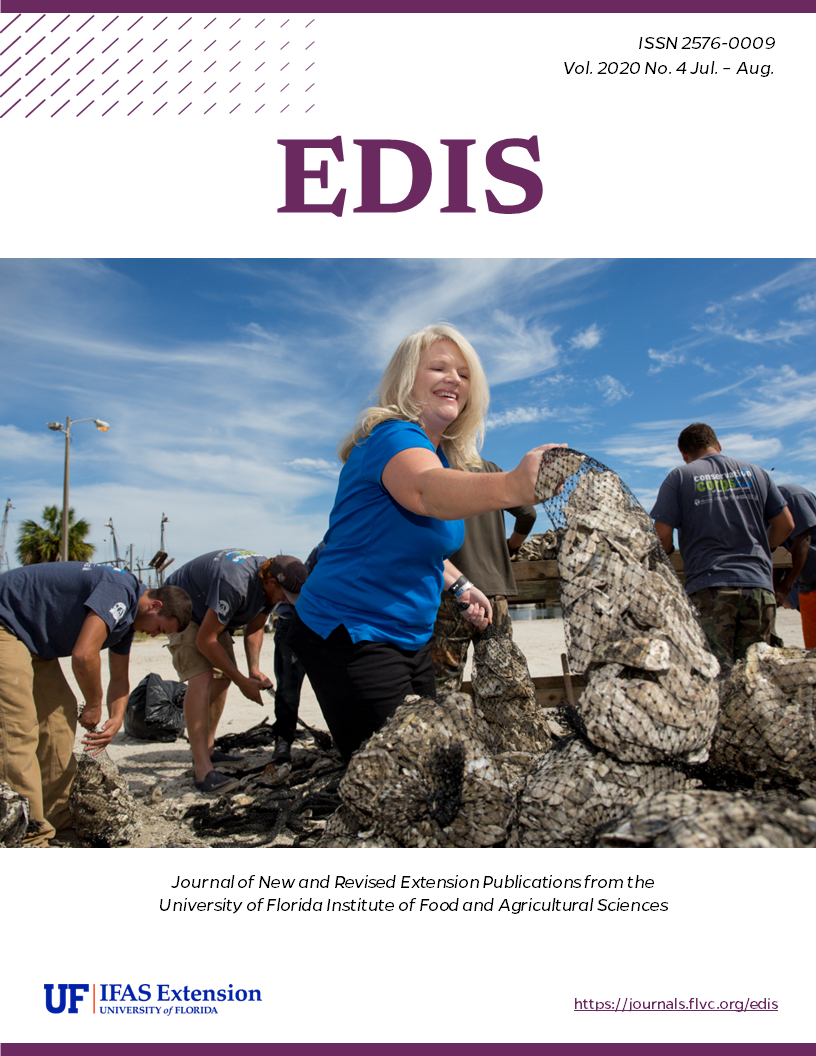Abstract
Chemigation is a process where an irrigation system is used for transport and delivery of agrochemicals, generally fertilizers and pesticides, to a crop (Haman and Zazueta, 2017). Drip or micro-sprinkler irrigation systems are often used in chemigation. If the irrigation is properly plumed and chemigation properly implemented, chemigation can help growers reduce chemical usage and costs as it is applied using existing irrigation distribution infrastructure. However, the irrigation system must first be outfitted with properly designed injection and safety equipment. In addition, it is important that the irrigation system is built to allow the injection of chemicals or fertilizers at a known rate and that ensures application uniformity. Knowing the correct concentration of chemicals during chemigation is critical as some chemicals could potentially damage plants. Chemigation of chemicals/fertilizers at higher concentrations could also lead to leaching and contamination of freshwater bodies. The purpose of this document is to provide a brief overview of the regulations and some helpful tips for growers interested in chemigation.
References
Clark, G. A., D. Z. Haman, and F. S. Zazueta. 2017. Injection of Chemicals into Irrigation Systems: Rates, Volumes and Injection Periods. BUL250. Gainesville: University of Florida Institute of Food and Agricultural Sciences. https://edis.ifas.ufl.edu/ae116.
DeValerio, J., D. Nistler, R. Hochmuth, and E. Simonne. 2018. Fertigation for Vegetables: A Practical Guide for Small Fields. Gainesville: University of Florida Institute of Food and Agricultural Sciences. HS1206. https://edis.ifas.ufl.edu/hs1206.
Haman, D. Z. 2017. Causes and Prevention of Emitter Plugging in Microirrigation Systems. BUL258. Gainesville: University of Florida Institute of Food and Agricultural Sciences. https://edis.ifas.ufl.edu/ae032.
Haman, D. Z., and F. S. Zazueta. 2017. Chemical Injection Methods for Irrigation. CIR864. Gainesville: University of Florida Institute of Food and Agricultural Sciences. https://edis.ifas.ufl.edu/wi004.
Hochmuth, G., R. Mylavarapu, and E. Hanlon. 2019. The Four Rs of Fertilizer Management. SL411. Gainesville: University of Florida Institute of Food and Agricultural Sciences. https://edis.ifas.ufl.edu/ss624.
Liu, G., and G. K. England. 2018. How to Convert Liquid Fertilizer into Dry Fertilizer for Commercial Vegetable and Fruit Crop Production. HS1200. Gainesville: University of Florida Institute of Food and Agricultural Sciences. https://edis.ifas.ufl.edu/hs1200.
Liu, G., K. Morgan, Y. Li, L. Zotarelli, Q. Wang, and J. DeValerio. 2019. What is 4R nutrient stewardship? HS1264. Gainesville: University of Florida Institute of Food and Agricultural Sciences. https://edis.ifas.ufl.edu/hs1264.
Liu, G., E. H. Simonne, K. T. Morgan, G. J. Hochmuth, S. Agehara, and R. Mylavarapu. 2019. Chapter 2. Fertilizer Management for Vegetable Production in Florida. Gainesville: University of Florida Institute of Food and Agricultural Sciences. https://edis.ifas.ufl.edu/pdffiles/cv/cv29600.pdf.
Zotarelli, L., M. D. Dukes, G. Liu, E. H. Simonne, and S. Agehara. 2019. Chapter 3. Principles and Practices of Irrigation Management for Vegetables. CV297. Gainesville: University of Florida Institute of Food and Agricultural Sciences. https://edis.ifas.ufl.edu/pdffiles/cv/cv29700.pdf.
Unless otherwise specified, articles published in the EDIS journal after January 1, 2024 are licensed under a Creative Commons Attribution-NonCommercial-NoDerivs 4.0 International (CC BY-NC-ND 4.0) license.

